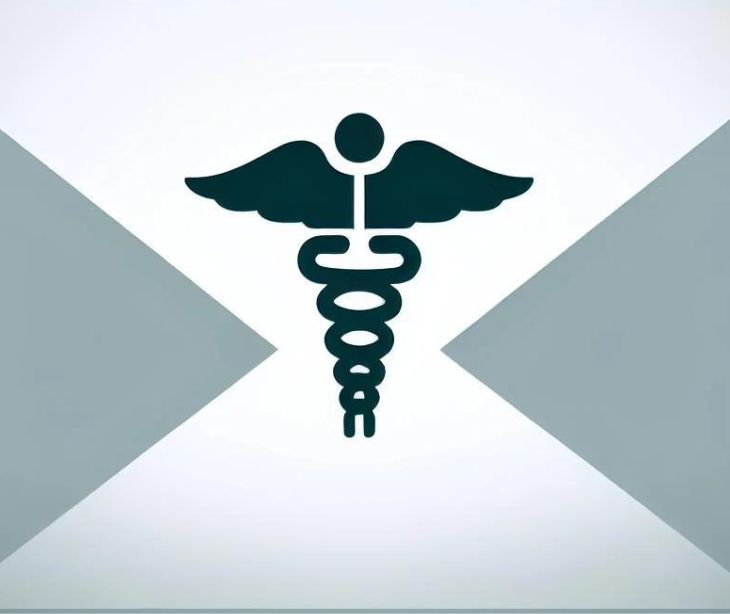
Many healthcare professionals worry about whether they can send information by email or whether emails need to be encrypted; however, there is no specific requirement outlined in privacy legislation regarding how health information should be transmitted to patients or third parties by these institutions. “Any method of communication can be used as long as you take reasonable steps to protect the privacy of the patient and the security of their health information,” says healthcare experts. So, to answer the question: yes, it is safe to use email.
Convenience vs. security
With 92% of the American population having access to email communication and 80% of patients preferring to use digital channels for communication with healthcare providers, email's widespread adoption can be attributed to its convenience. With just a few clicks, you can send messages and attachments to recipients anywhere in the world. However, this convenience comes with inherent security vulnerabilities. Unlike traditional mail, which is sealed and physically transported, emails travel through various servers and networks, making them susceptible to interception or unauthorized access.
Understanding the risks
- Data interception: Emails transmitted over the internet can be intercepted by cybercriminals or malicious actors, especially if unsecured networks are used to share emails.
- Unauthorized access: If email accounts are compromised, sensitive information contained within emails could be accessed by unauthorized personnel.
- Data breaches: Inadequate security measures or human error can lead to data breaches, exposing sensitive information to unauthorized parties.
- Lack of encryption: Without encryption, email content is essentially plaintext, susceptible to interception and eavesdropping.
See also: Email cyber threats 101: Types and tactics
The benefits of email
- Speed and efficiency: Email enables near-instantaneous communication, allowing messages to be sent and received within seconds, regardless of geographical location, thus enhancing productivity and facilitating real-time collaboration.
- Cost-effectiveness: Compared to traditional mail, email is cost-effective, eliminating postage, paper, and envelopes associated with traditional mail, resulting in significant savings for individuals and businesses, especially for large-scale communication efforts.
- Accessibility and convenience: Email provides unparalleled accessibility, allowing users to send and receive messages from any internet-connected device, including computers, smartphones, and tablets.
- Global reach: With email, geographic boundaries are virtually non-existent. Users can communicate with individuals or organizations anywhere in the world, breaking down barriers and facilitating international collaboration.
- Versatility: Email is a versatile communication tool that supports various types of content, including text, images, documents, and multimedia files. This versatility makes email suitable for a wide range of communication needs, from simple text-based messages to complex business correspondence.
- Organization and archiving: Email platforms often include features for organizing and archiving messages, making it easy to categorize, search, and retrieve past communications. Additionally, email archiving ensures compliance with regulatory requirements and provides a record of communication history for future reference.
- Scheduling and reminders: Email platforms provide built-in scheduling features for messages, reminders, and events, enhancing time management and organization for busy users.
- Marketing and communication: Email marketing is a powerful tool for businesses to engage with their target audience, fostering customer relationships, driving sales, and increasing brand visibility.
- Environmental impact: Email has a lower environmental impact than traditional mail, reducing paper, ink, and energy consumption, contributing to conservation efforts, and minimizing carbon emissions and waste generation.
- Security and privacy: While email security is a concern, modern email platforms offer robust security features, such as encryption, spam filtering, and authentication protocols, to protect users' privacy and data integrity. By implementing security best practices and staying vigilant against cyber threats, users can minimize the risk of unauthorized access, phishing attacks, and data breaches.
See also: HIPAA Compliant Email: The Definitive Guide
Regulatory compliance
The Health Insurance Portability and Accountability Act (HIPAA) sets stringent standards for protecting patients' sensitive health information, mandating that healthcare providers and organizations implement safeguards to ensure the confidentiality, integrity, and availability of electronic protected health information (ePHI). When transmitting patient records through email, healthcare providers must comply with HIPAA requirements, including the use of secure communication channels that are encrypted, user authentication methods, access controls, and audit trails. Furthermore, gaining explicit consent from patients before sending ePHI over email and verifying whether recipients have authorization to view such confidential details ensures compliance with HIPAA regulations. By implementing robust security measures and adhering to HIPAA guidelines, healthcare providers can leverage email as a valuable communication tool while safeguarding patient privacy and complying with regulatory requirements.
Best practices for secure email communication
While the risks associated with email cannot be entirely eliminated, they can be mitigated through the implementation of robust security measures and adherence to best practices:
- Encryption: Use encryption to secure email content from unauthorized access. Encryption scrambles the data, making it unreadable to anyone without the decryption key.
- Secure servers: Choose reputable, HIPAA compliant email service providers that prioritize security and compliance. Ensure that servers are encrypted and regularly updated to guard against vulnerabilities.
- User authentication: Implement multi-factor authentication (MFA) to verify the identity of users accessing email accounts. This adds an extra layer of security beyond just a username and password.
- Access controls: Limit access to sensitive information to authorized personnel only. Use role-based access controls (RBAC) to restrict permissions based on job responsibilities.
- Training and awareness: Educate employees on email security best practices, including how to recognize phishing attempts, avoid clicking on suspicious links or attachments, and report any security incidents promptly.
- Consent and confidentiality: Obtain explicit consent from recipients before sending sensitive information via email. Clearly communicate the risks involved and ensure recipients understand their responsibilities for safeguarding confidential data.
- Regular audits and updates: Conduct regular security audits to identify and address any vulnerabilities in email systems. Keep software and security protocols up-to-date to protect against emerging threats.
FAQs
How does HIPAA regulate emails?
HIPAA regulates email communication by setting strict standards for the protection of patients' sensitive health information. The HIPAA Privacy Rule and Security Rule specifically address the use of email in healthcare settings and outline requirements that covered entities must follow to ensure the confidentiality, integrity, and availability of ePHI transmitted via email.
What are the different uses of email in healthcare?
Email plays a crucial role in healthcare, serving various purposes that contribute to efficient communication, patient care, and administrative processes. Here are some different uses of email in healthcare:
- Appointment reminders
- Lab and test results
- Prescription refills
- Patient education and outreach
- Consultations and referrals
- Administrative communication
- Billing and financial communication
- Healthcare marketing and promotions
- Telehealth and remote consultations
- Research and academic communication
Is email communication secure?
Email communication can be secure if proper measures are taken, such as using encryption, secure servers, and authentication protocols. However, without these safeguards, emails are susceptible to interception and unauthorized access.
Subscribe to Paubox Weekly
Every Friday we'll bring you the most important news from Paubox. Our aim is to make you smarter, faster.




